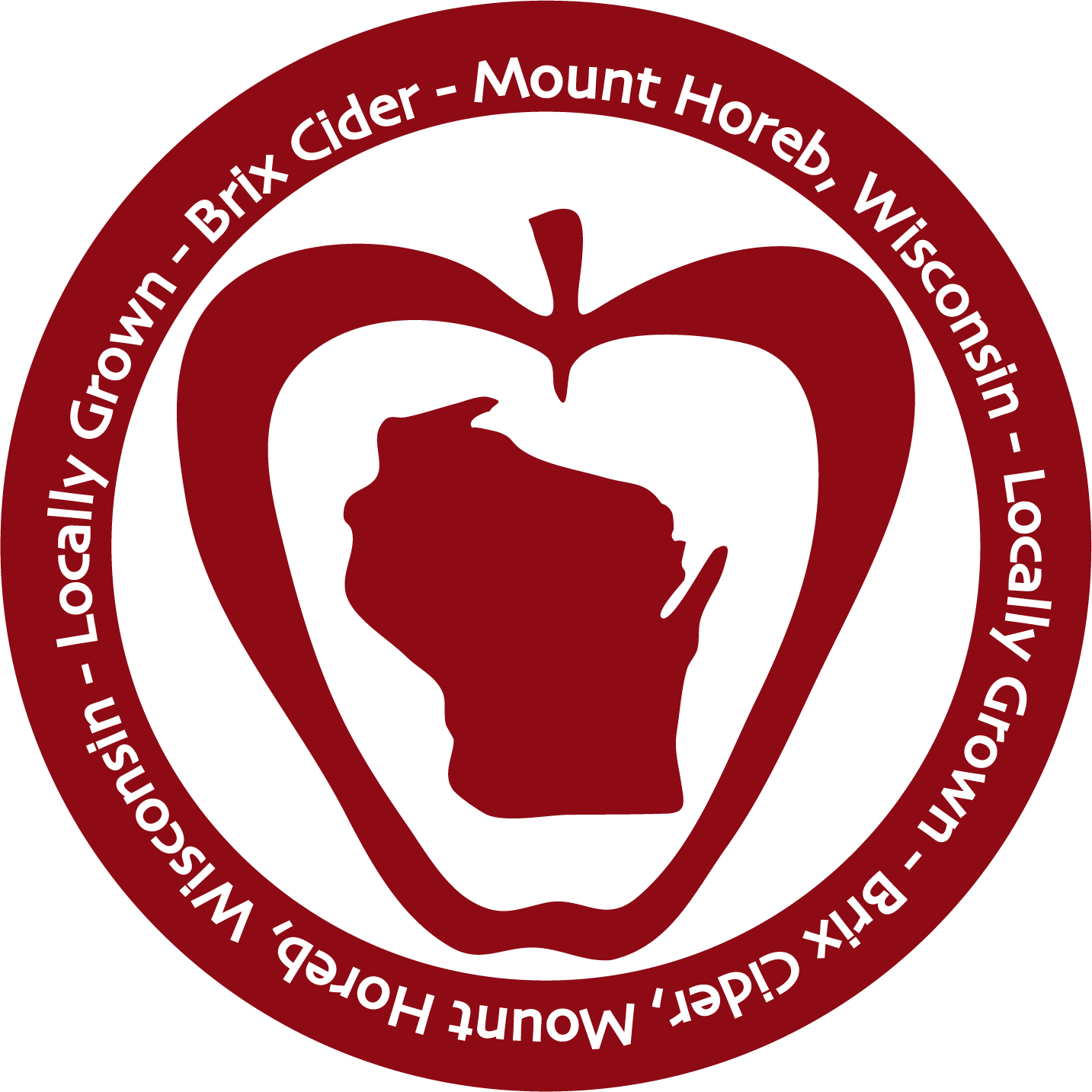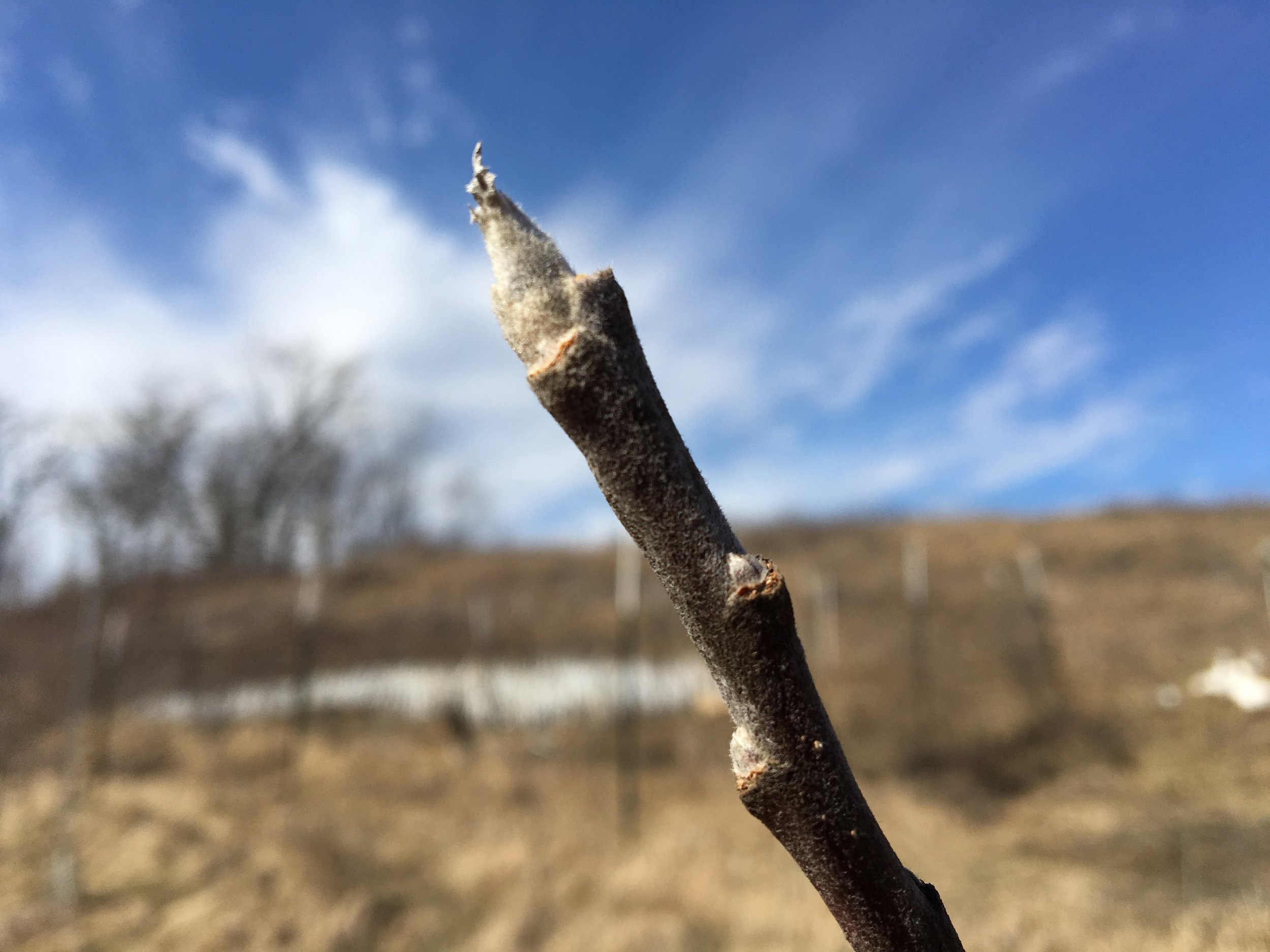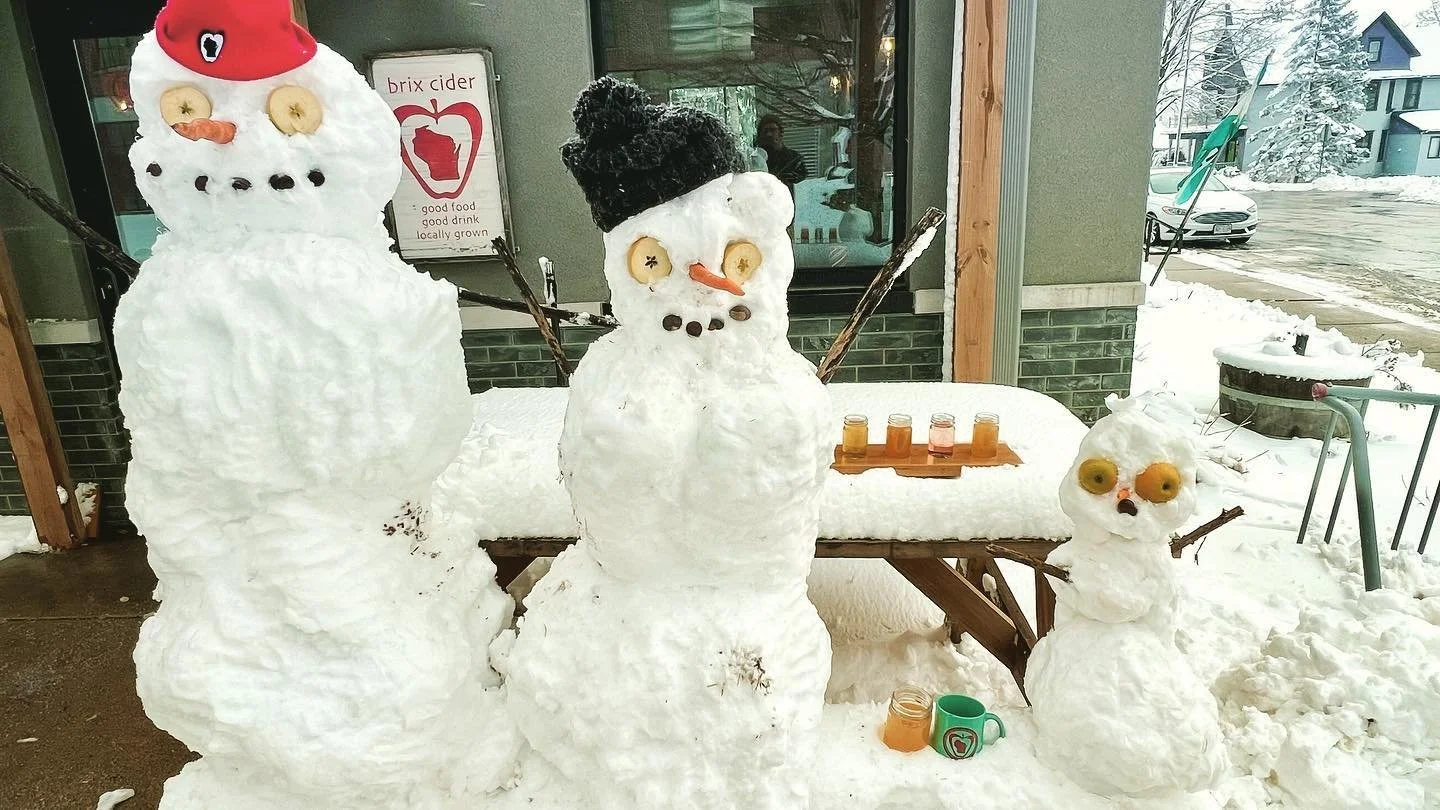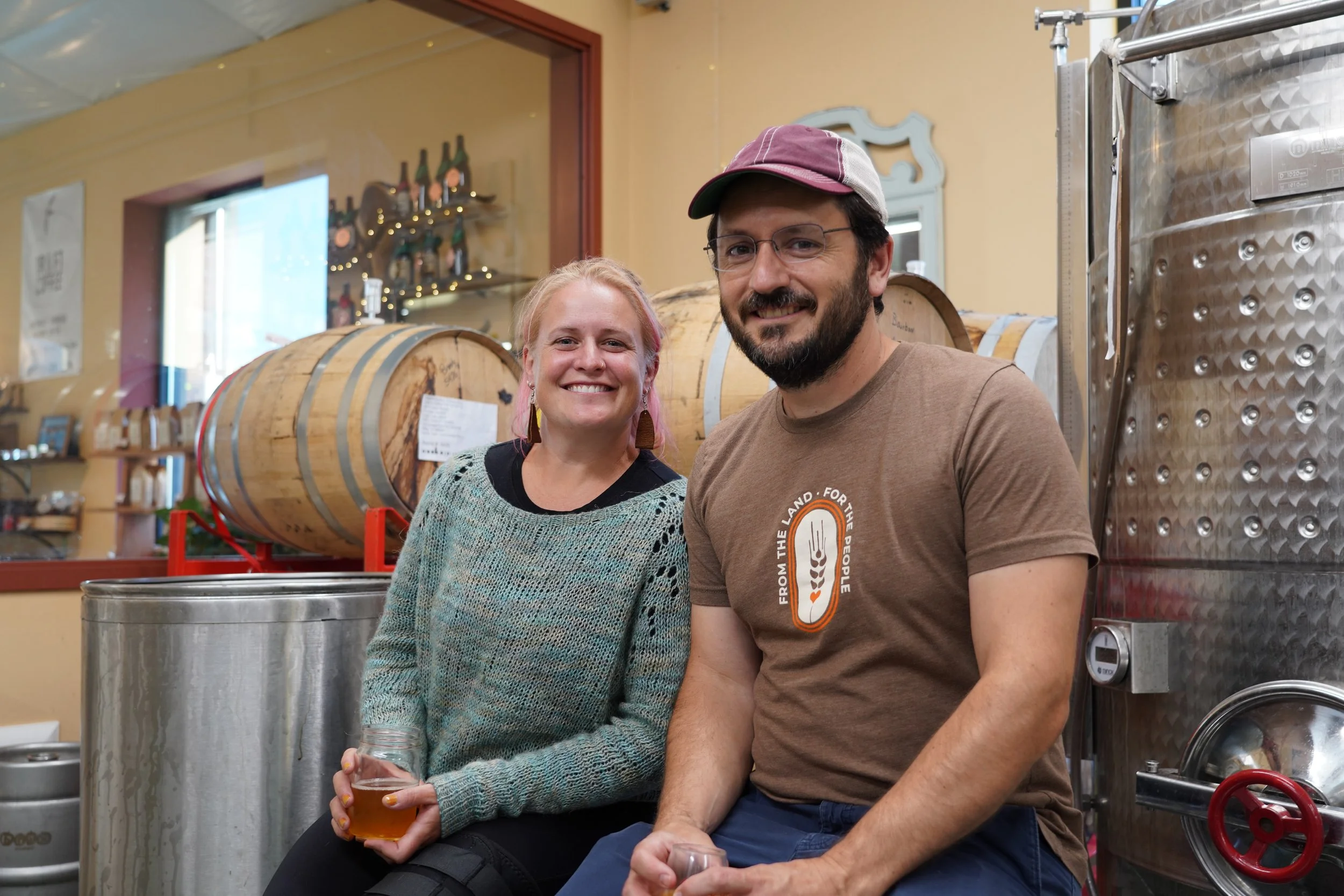Apples and Climate Change
The first stage of an apple's bud development is called "silver tip," and normally we see it sometime in April. I took this photo today in our orchard. It shows a bud entering the silver tip stage on February 22nd.
Research suggests that a hard freeze of 3 degrees would kill 90 percent of our apples at this stage. The 10 day forecast is looking warm, suggesting that the buds will continue to develop, likely reaching the "green tip" phase at which point a 10 degree overnight low would kill 90 percent of them. From there the buds grow progressively more susceptible to damage as they develop and blossom.
In other words, all it will take is a few more warm weeks (already in the forecast) followed by just one cold night in March or April (highly likely) and a large percent of the local and possibly regional apple crop will be wiped out for 2017.
Last year, several of the state's fruit growers were hit hard by a late frost. Another early bloom period followed by a late frost in 2012 took out the majority of the Midwestern apple crop that year as well. It took growers years to recover from this event, and they hoped never to see a similar event in their lifetime. Unfortunately, I think we're starting to experience the new "normal."
Back in 1999, research in Wisconsin already showed bloom times advancing progressively earlier over 61 years of data collection. I'm not sure how 18 years later, with scientific consensus and thousands of conclusive research articles to prove it, we are stuck with ignoramuses leading the country, still trying to force a debate about the existence of climate change instead of pulling their heads out of their butts and doing something about it.
We are a startup company. A small business. Young entrepreneurs. I think any politician would at least say that they support what we are trying to do because small businesses are drivers of economic growth. Unfortunately, climate change is undermining our potential by taking away our most fundamental raw material - apples.
UPDATE
In the days after this post was published, the temperature gradually (and thankfully) dropped to more normal seasonal temperatures - better than what the forecast had predicted. We had a couple close calls as we moved into spring, including a frost during bloom, but fortunately the frost wasn't severe enough to cause any noticeable damage. We got lucky. I did notice apple trees that did not set fruit on a couple other farms I visited this summer, but these were largely in valleys where cold air can settle and where frost can be more severe.











